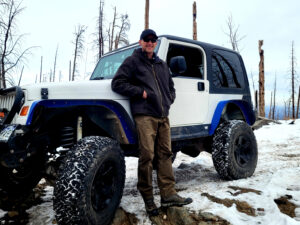
My name is Chris Juszak (some people know me as CJ) and this website is my blog to save and share information, notes, pictures, etc..
I was born in southern California and lived in various cities in San Diego County (mostly Escondido and Poway) until I was 14, when I moved to northern California with my mom and my two younger brothers. I lived in the small towns of Oak Run and Shingletown in Shasta County until I was 19. I attended classes at Shasta College in Redding until I moved to attend classes at California State University, Chico. In Chico, I earned a Bachelors of Science degree in Computer Science and met Laurie, who I later married. Laurie is originally from Santa Cruz County. After college, Laurie and I moved to Ventura County where I worked as a government computer scientist for the Naval Air Systems Command (NAVAIR). Laurie worked for a bank during those years. After three year in Ventura County, we moved to Portsmouth, Virginia where I started working for government contractors in various engineering related roles. While living in Virginia, Laurie worked at a doctor’s office. After four years in Virginia, we moved to Fort Collins, Colorado. While living in Fort Collins, Laurie and I had a son together named Lee and I earned my Masters of Engineering degree in Systems Engineering from Colorado State University.
Lee is a teenager in his last year of middle school and some of his hobbies include technical projects (coding), geocaching, birdwatching, and off-roading with me – even though he’s a bit too young to drive. Laurie works at a nearby elementary school and also spends time volunteering with nonprofit organizations. I’m still working for government contractors in an engineering role and I’ve had various personal hobbies and interests over the years, ranging from software and electronics projects to woodworking. I also like to get outdoors as much as I can (hiking and off-roading).
We plan to stay in Colorado at least until Lee finishes high school. However, we’re considering “snowbird options”, migrating between Fort Collins and some place warmer as part of our future adventures.
I use this website as a way to collect notes and share information about some of the activities I’m involved with. Some of my blogs are technical in nature, related to my background and interests in engineering. A lot of these notes are just for me to refer back to later, but I hope others might find them useful. Other blogs will simply contain family pictures or videos of whatever we have been up to recently.
For some information about my work life, please see my résumé page.